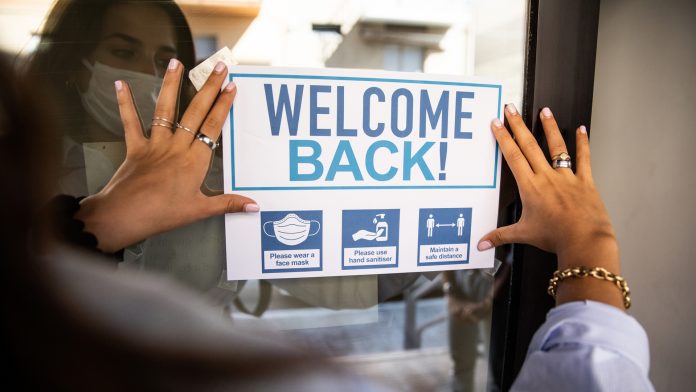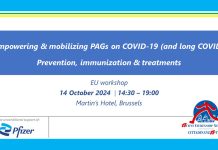
A collaboration of UK scientists have developed a cutting-edge predictive model that can accurately assess the risk of COVID-19 infection in office and school settings.
As the world starts to recover from the pandemic, millions of people are returning to their workplaces and schools, congested places that have the potential to spread COVID-19 rapidly. To assess this danger, a team comprised of researchers from the University of Cambridge, Imperial College London, and the University of Leeds has created a predictive model that analyses the risks of COVID-19 infection in these environments.
The findings from their research are published in the journal Indoor and Built Environment.
Determining COVID-19 infection risk
The novel model works by employing CO2 and occupancy data to accurately estimate how many workers are likely to be infected by an asymptomatic but infectious colleague. The model indicates that halving the occupancy of an office may reduce the risk of airborne COVID-19 infection four-fold.
The model suggests that workers in well-ventilated, quiet offices are less likely to spread the virus through airborne particles; however, this risk is significantly increased if the office has poor ventilation or if their jobs entail lots of speaking. The researchers ascertained that each infected worker has the potential to infect between two and four other people in an adequately ventilated but noisy call centre, with the risk being far greater if the infected person is a ‘super spreader’.
Importance of adequate ventilation
The researchers explain that CO2 levels are higher in places with lower ventilation rates and high occupancy, so monitoring CO2 effectively can help inform building managers of where the risk of airborne COVID-19 infection is most elevated. This enables them to make achievable interventions, such as improving ventilation or modifying work attendance patterns to reduce occupancy.
For shared environments such as offices and classrooms, exposure to infectious airborne matter can build up, and rooms occupancy can vary significantly, so the model utilises CO2 levels as a proxy for exhaled breath to examine the variable risk of COVID-19 infection as people enter and leave the space.
Professor Paul Linden, the co-author of the research from Cambridge’s Department of Applied Mathematics and Theoretical Physics, said: “Ventilation is complicated, and airflow is invisible, so it’s hard for people to appreciate the effects in the home or workplace. Commercially available CO2 monitors are being installed in schools, and I would recommend their installation in the workplace.”
Lead author Dr Henry Burridge, from Imperial College London, commented: “Our work emphasises the importance of good ventilation in workplaces and in schools. The model demonstrates that by managing the ventilation and occupancy levels of shared spaces, we can manage the risk of airborne infection by a virus such as that which causes COVID-19.”
“The appropriate use of tools such as CO2 monitoring can give building managers a much better understanding of their own ventilation systems and how they are performing for each activity undertaken in the space,” said Professor Andrew Curran, Chief Scientific Adviser at the Health and Safety Executive and lead for the PROTECT study. “For most businesses, a COVID-19 control strategy will involve a blended combination of measures identified through a risk assessment – there is no silver bullet.”








